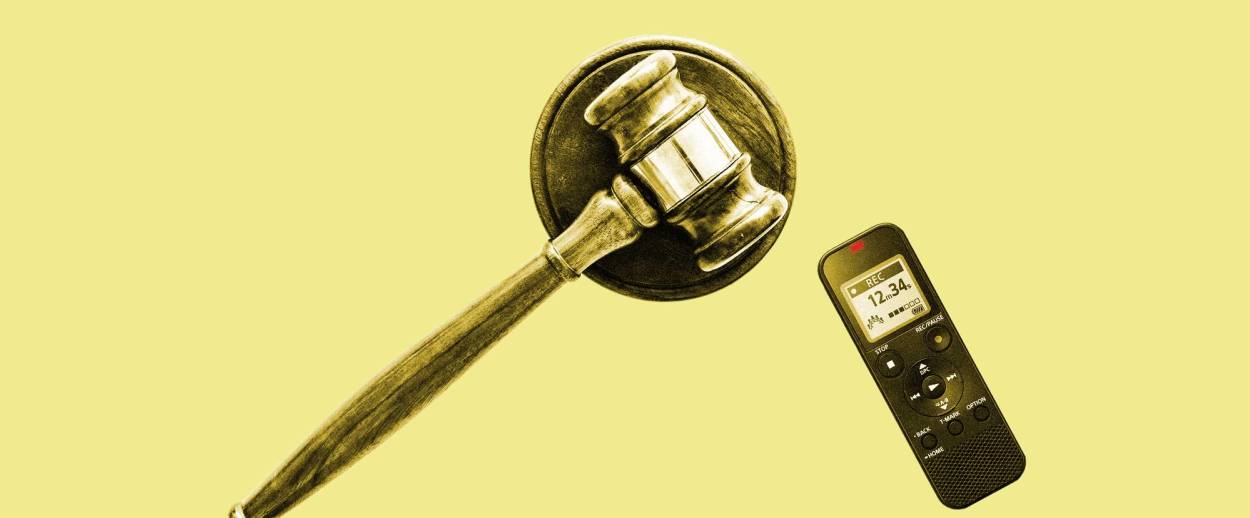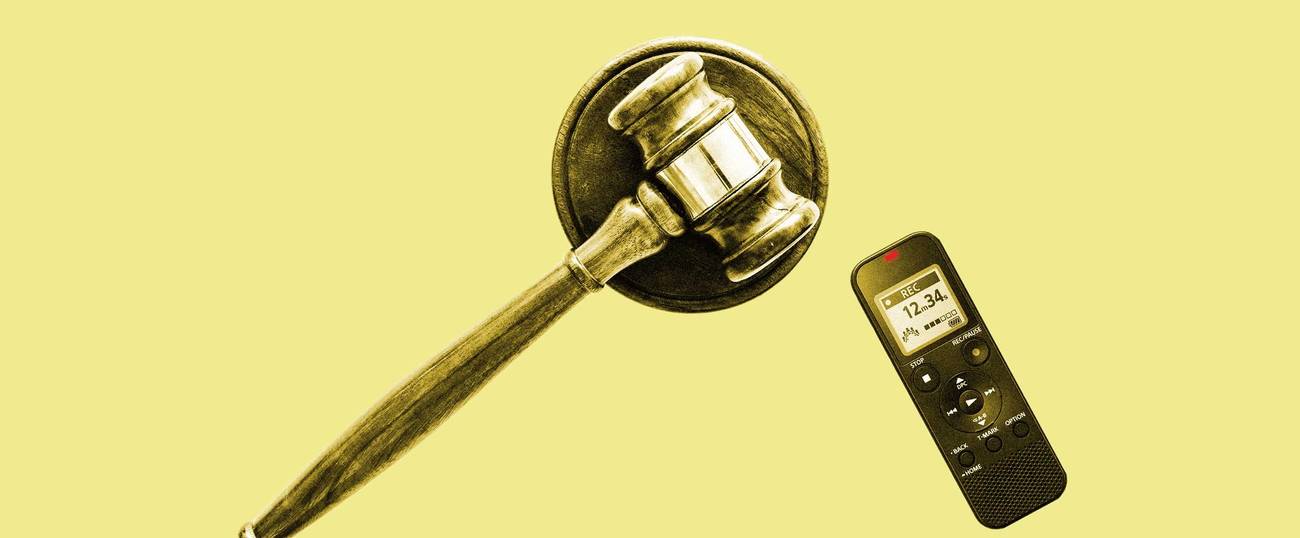Judge, Jury, and Interviewer
Celebrity profiles have become an excuse for fawning over celebrities or attacking political targets, but it’s time for journalists to get back to seeking the truth




In February of this year, the internet was rattled by the sudden rediscovery of a 48-year-old Playboy interview with John Wayne. The actor opined at length on his political views, and what he said was shocking; his comments were racist and homophobic, the kind of stuff no decent person would give voice to in public in 2019, let alone in print.
But equally surprising by current standards was how Wayne’s interviewer approached his task. Contributing editor Richard Warren Lewis pressed the elderly actor on his controversial remarks, often asking for clarification, sometimes challenging his perspective, pointing out the counterarguments to his points. And yet, Wayne’s proverbial hanging (arguably a done deal right around the time he uttered the words “I believe in white supremacy” on the record) was a self-inflicted thing; Lewis, expertly handling his subject, just supplied the rope.
Wayne’s Playboy interview is a fine example of a seasoned profiler at work. Lewis understands the controversial nature of Wayne’s views, as well as the most cogent arguments against them; the questions he chooses to ask make that clear. But whatever his personal feelings, admiration or contempt or something in between, he kept them off the page. The reporter’s job was not to levy moral judgment, but to get to the truth—and readers would have had to draw their own conclusions as to John Wayne’s deplorability.
This balancing act was once considered essential to the art of interviewing: to ask hard-hitting questions without making the subject feel wounded, to make room for candor without tolerating obfuscation, to insist on answers without turning a conversation into an argument. It requires both keen interest and ethical distance, and it can produce remarkable results: from Joseph Mitchell’s colorful portraits of the unsung oddballs of Old New York street life, to Gay Talese’s seminal “Frank Sinatra Has a Cold,” to Barbara Walters’ intimate and revealing conversations with Fidel Castro or Monica Lewinsky. The more controversial the figure, the more important that distance, that restraint. Gayle King, sitting patiently as an enraged R. Kelly paced and screamed, wasn’t just a portrait of composure; she was a seasoned reporter who knew how to keep her subject in the room.
Lately, though, that balance has shifted—or sometimes, disappeared entirely. Many popular profiles of artists, entertainers, or politicians now find the writer in a co-starring role. Sometimes the journalist plays the plucky sidekick to her story’s rich and famous hero (and sometimes, as in Caity Weaver’s fantastic profile of Dwayne Johnson, the result is riveting and uproariously funny). But there’s a dark side even to the best work of this kind, especially on social media, where writers bow, scrape, or openly fawn on their subjects in the hopes of a celebrity retweet. The public acknowledgement of a star, and the virality that goes with it, has come to function as an alternative form of currency in a world where the work of writing itself pays less and less. In this market, maintaining a neutral remove may seem like too much to ask, but the consequences of not doing so are real: The open thirsting for connection to (or the approval of) profile subjects bespeaks the desperation of a profession, now dying, that used to command respect.
Perhaps that’s why a cottage industry has emerged in the opposite direction—one in which journalists assert themselves not as mere reporters, but moral authorities responsible for guiding their readers to the correct conclusion about who it is and isn’t OK to admire. In a culture ruled by snark, a hunger has emerged for profiles in which the writer casts himself as a foil to his subject: subtly side-eyeing a millennial entrepreneur, checking the privilege of a self-help guru, eviscerating one of Fox News’ more loathed personalities, or lecturing a provocateur novelist about the wrongness of his worldview (even as said novelist complains repeatedly that it, and he, are being misrepresented).
Isaac Chotiner’s confrontational (and sometimes openly contemptuous) New Yorker interviews with public figures are the gold standard for this approach; a recent New Republic article referred to the reporter, by way of a compliment, as the magazine’s “inquisitor in chief.” But the sentiment that drives its popularity is hardly unique to prestige media, or to print. YouTube is a goldmine of clips that promise the spectacle of left-wing interlocutors DESTROYED or SLAUGHTERED or SHREDDED or ENDED by commentators like Dave Rubin or Ben Shapiro; John Oliver delivers “scathing,” “savage,” “scorching” takedowns of hypocrites on the right.
It’s hard to criticize these commentators, when they’re only giving the public what it demands. Readers are less inclined to ponder a piece of careful, objective reporting and draw our own conclusions; we don’t want to decide for ourselves who’s good, who’s bad, and who inconveniently defies categorization; and we definitely do not want to know what the Bad People think, or why they think it, or even necessarily to imagine them as “people” at all. To attempt to understand is to humanize, and humanizing the wrong humans cannot be tolerated. The old logic, that illuminating noxious viewpoints is the best way to understand and discredit them, no longer applies. That Playboy interview— the one that gave John Wayne so much rope with which to hang himself, but also provided insight into how and why a person might embrace such odious ideas—would be seen in today’s landscape as something unforgivable: a platform for a man who didn’t deserve to be heard.
Ian Buruma, reflecting on his recent ouster as editor in chief of The New York Review of Books after he chose to publish an essay by accused sexual predator Jian Ghomeshi, observed this expectational shift: “When I said that it wasn’t our role to protect our readers from possible offence, I was told that this was exactly what our role should be,” he wrote in the Financial Times. But it’s not just protection from offense that is being offered by the new model. It’s the safety and satisfaction of knowing you’re on the right side of history, as judged by a respected member of the ordained cognoscenti. It’s not a coincidence that it was an interview with Choitner that spelled Buruma’s undoing.
The popularity of this approach suggests that it’s not going anywhere anytime soon. Left and right alike, everyone is much too busy enjoying this digital-age version of a public execution—one where people are canceled by their moral superiors instead of beheaded by a big guy with an axe. Take Chotiner’s interview with Bret Easton Ellis: a seminal entry into modern-day dunk culture. People didn’t just love it; they celebrated it, a righteous victory in the culture wars. One comedy troupe has already adapted it for the stage. And this is interesting, because as much as the interviewer emerges from this interaction a hero, the interview does little to illuminate its subject. Chotiner makes it very clear how little he thinks of Ellis, but what does Ellis think? The headline tells us (“Bret Easton Ellis Thinks You’re Overreacting to Donald Trump”), but Ellis doesn’t, really; the main thrust of his comments is that he feels misunderstood and misrepresented throughout the exchange. Those seeking to understand his perspective or how he came to it will have to look elsewhere (perhaps in his new book, although this could be a risky proposition for the right-side-of-history crowd; the interview’s most cutting moment is a pointed suggestion by Chotiner that it should never have been written at all).
Some will argue that the stakes are too high now for journalists to refrain from judgment—that they have a responsibility not just to protect readers from offensive perspectives but to denounce them on the page, lest they get any traction (or land another Donald Trump in the White House). It’s not hard to see why: When tribalism reigns, the insides of other people’s heads are increasingly scary places. Who knows what contagion you might expose yourself to in your quest for understanding; who knows what kind of poison might contaminate your own thoughts?
But we are sacrificing something precious by ignoring the value of objective reporting, whether it’s by encouraging writers to act like thirsty fanboys or anointing them as the gatekeepers of an unforgiving cancel culture. Journalism isn’t supposed to be a spectator sport where we root for our own and boo the outsiders; it’s about seeking the truth, even when that truth is uncomfortable. And readers should be trusted—and should trust themselves—to confront that truth critically, thoughtfully, and courageously. Not just to be validated in our moral righteousness, but to consider the possibility that we may, occasionally, be missing something.
***
Like this article? Sign up for our Daily Digest to get Tablet magazine’s new content in your inbox each morning.
Kat Rosenfield is a culture writer and novelist. Her next book, No One Will Miss Her, will be published by William Morrow in October 2021.